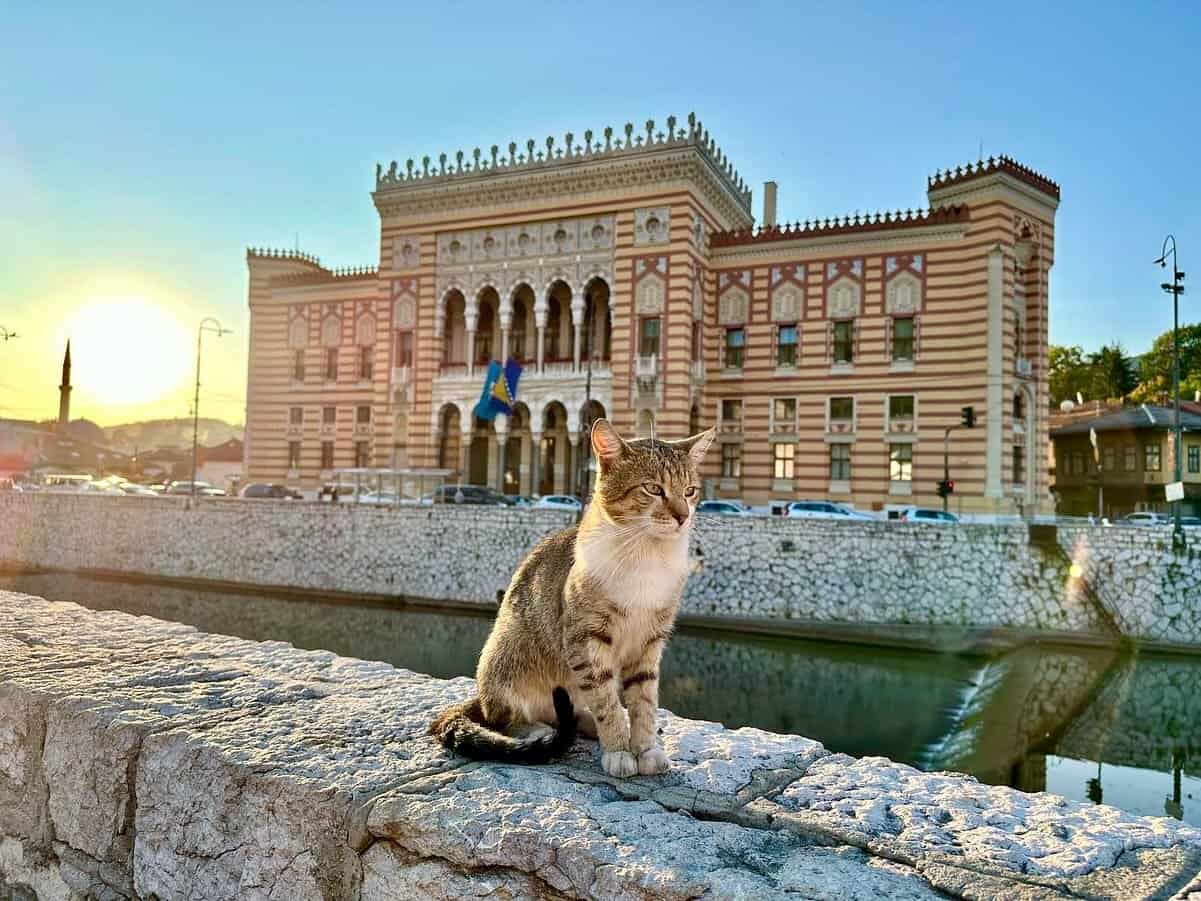
Sarajevo, the capital of Bosnia and Herzegovina, is a city where East meets West.
I would say that five days is the norm for staying in Sarajevo, but if a visitor has only three days, they can still experience the culture, enjoy the surrounding nature, and learn about its interesting history.
Meet Bosnia
Welcome to the perfect spot where curiosity meets excitement – every trip here is your chance to see the world with fresh eyes and an open heart ready for adventure.
– Experience the best of Bosnia and Herzegovina in 3 days – HERE
– Mostar Tour – Full Day guided tour – HERE
– Fall of Yugoslavia – Sarajevo Siege Tour – HERE
… check all the tours here.
Our team feels like a close-knit family, made up of folks from all walks of life-sociology, economics, and more – bringing together a mix of expertise and a real love for helping guests connect deeply with the places they explore.
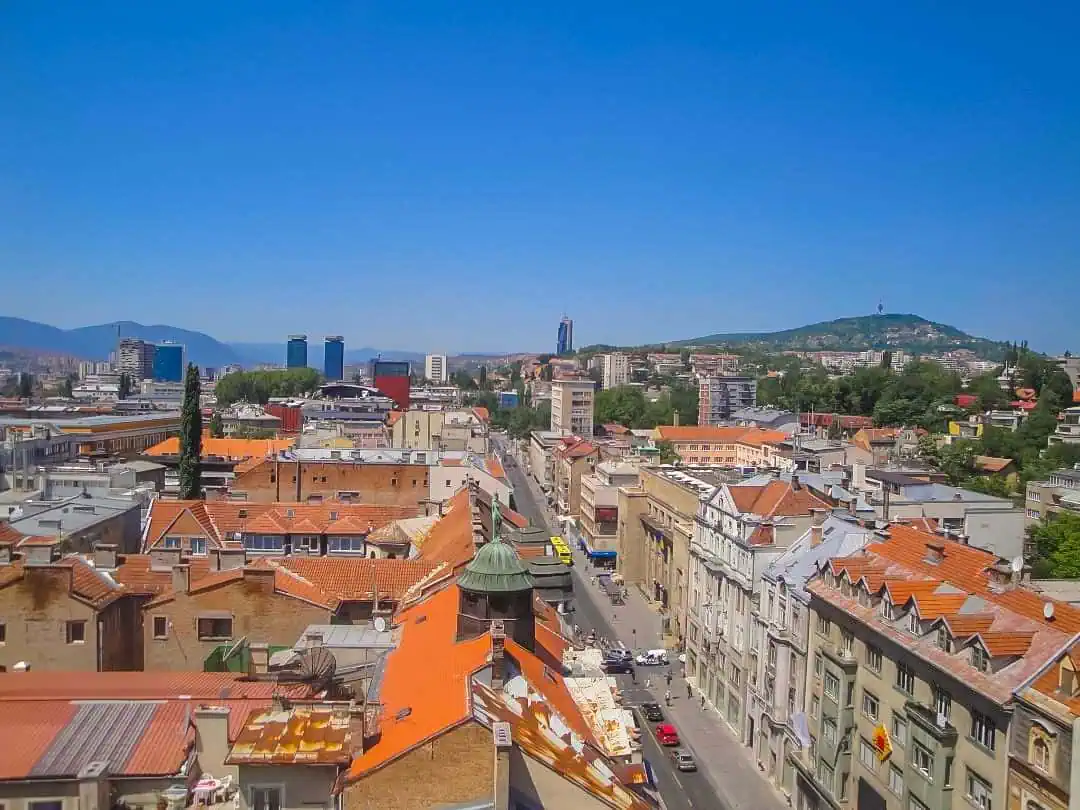 Overview over Sarajevo, Bosnia Herzegovina.
Overview over Sarajevo, Bosnia Herzegovina.
Day 1: Culture
The definition of culture is very complex, but in a nutshell, it represents everything created by a certain group of people. This includes both material elements, such as food, architecture and art, and non-material elements, such as way of life and language.
For most visitors who have never been to Sarajevo before, the best way to experience the culture is to simply walk the city streets and hear stories about the city. Sarajevo’s old town is one of the easiest in Europe to navigate. You could see it in an hour, but why limit yourself to just that? Why not book a walking tour and hear the stories that shaped Sarajevo?
For example, there’s the story of how Bosnia begins where logic ends, as illustrated by the fact that the Sarajevo beer factory was opened by Muslims (Ottoman Turks) in 1864, and the Town Hall was built in an Islamic architectural style by Austro-Hungarians, who were mostly Catholics. You can learn about the culture of drinking coffee and the concept of ‘ćejf’, which is hard to translate but could be described as ‘the pleasure of doing things slowly and in an unhurried fashion’.
You can also learn about the culture of religious tolerance — Sarajevo has four different religious temples within a 950-metre radius, the youngest of which is the Ashkenazi Synagogue, built in 1902 — and the stubbornness of the proud Bosnian man, as illustrated by the story of how the Inat kuća (House of Spite) was moved brick by brick from one side of the river to the other.
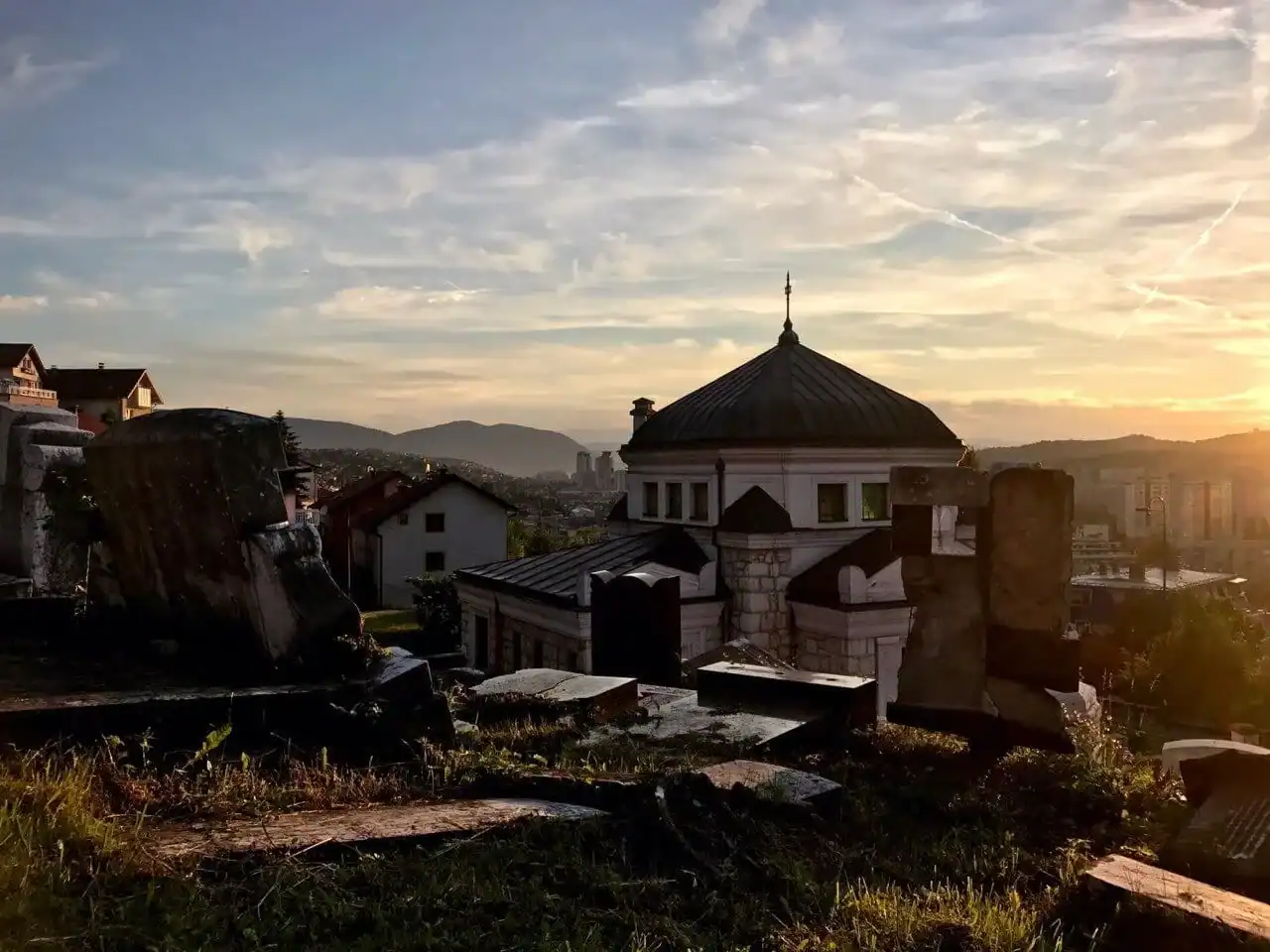 Jewish heritage tour in Sarajevo, Bosnia Herzegovina.
Jewish heritage tour in Sarajevo, Bosnia Herzegovina.
Indulge in another aspect of the culture: Bosnian cuisine. Try Ćevapi (barbecued meat sausages made of beef and lamb and served in a special type of bread called somun) or Bosnian pies (savoury phyllo dough filled with minced beef, cheese, potato or spinach). Regarding the pies, there is one warning. Please don’t say ‘burek with cheese‘; people in Bosnia are allergic to that expression.
Learn about the traditional crafts of Sarajevo, particularly the art of coppersmithing. Unlike locksmiths, fur makers and bookbinders, coppersmiths were not affected by the Industrial Revolution because they always had customers. The people of Bosnia simply love coffee too much, so there has always been a market for coppersmith products.
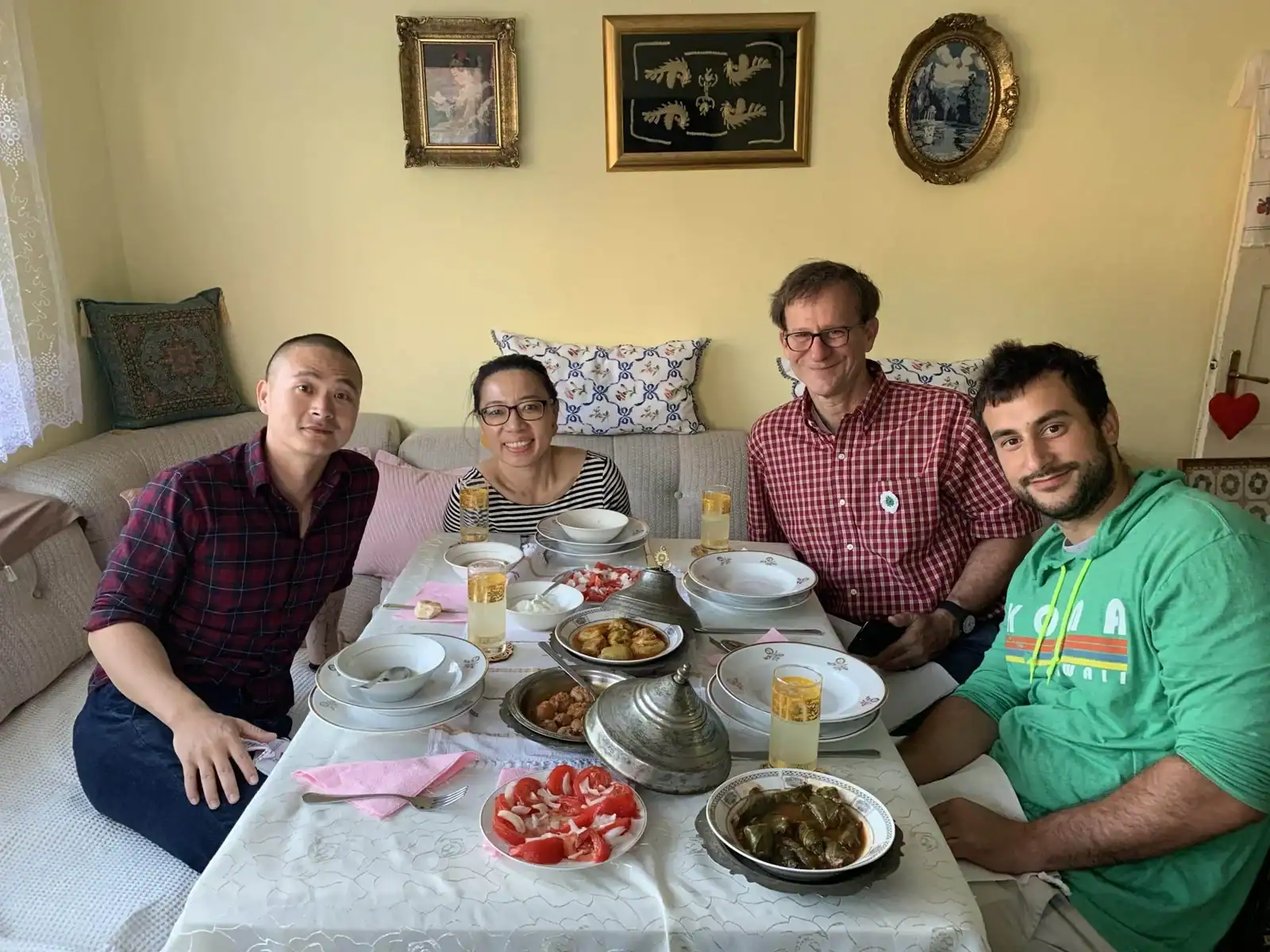 Traditional Bosnian dinner with a host family in Sarajevo.
Traditional Bosnian dinner with a host family in Sarajevo.
Day 2 – History
By the end of day one, you’ll have a general understanding of Sarajevo’s history.
You will understand the context and recap: The Ottoman and Austro-Hungarian Empires; two versions of Yugoslavia; the Nazi occupation; and Bosnia and Herzegovina’s independence since 1992.
However, if you want to delve deeper, you’ll need to dedicate an entire day to the 20th century.
The 20th century in Sarajevo was marked by three events: the assassination of Archduke Franz Ferdinand, the Sarajevo Winter Olympics, and the Siege of Sarajevo during the Bosnian War.
The death of Franz Ferdinand in Sarajevo sparked the beginning of World War I. The heir to the Austro-Hungarian throne was visiting Sarajevo on June 28, 1914, with his wife, Sophie. Due to a series of events, Gavrilo Princip, a Serbian nationalist, killed them both next to the Latin Bridge in Sarajevo. Since Europe had already been on the verge of war for years, the great powers of Europe began declaring war on one another. Out of the six major European empires, four did not survive the war’s consequences, and even the victors were severely weakened. Next to the place where the unfortunate Austrian prince was killed, there is a museum dedicated to the Austro-Hungarian period in Bosnia and Herzegovina (1878–1918).
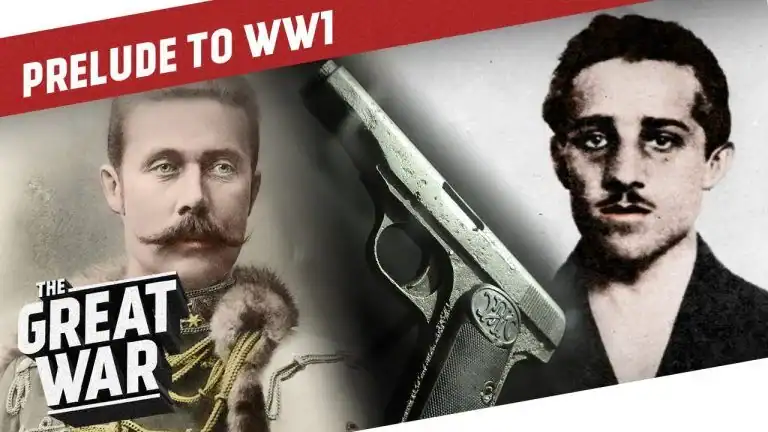 Assassination of Archduke Franz Ferdinand.
Assassination of Archduke Franz Ferdinand.
About a five-minute walk from the Sarajevo Cathedral (Cathedral of the Sacred Heart), you can visit the Museum of the Sarajevo Winter Olympics. There, you can learn about the greatest period in Sarajevo’s history: February 1984, when Sarajevo was the center of the world.
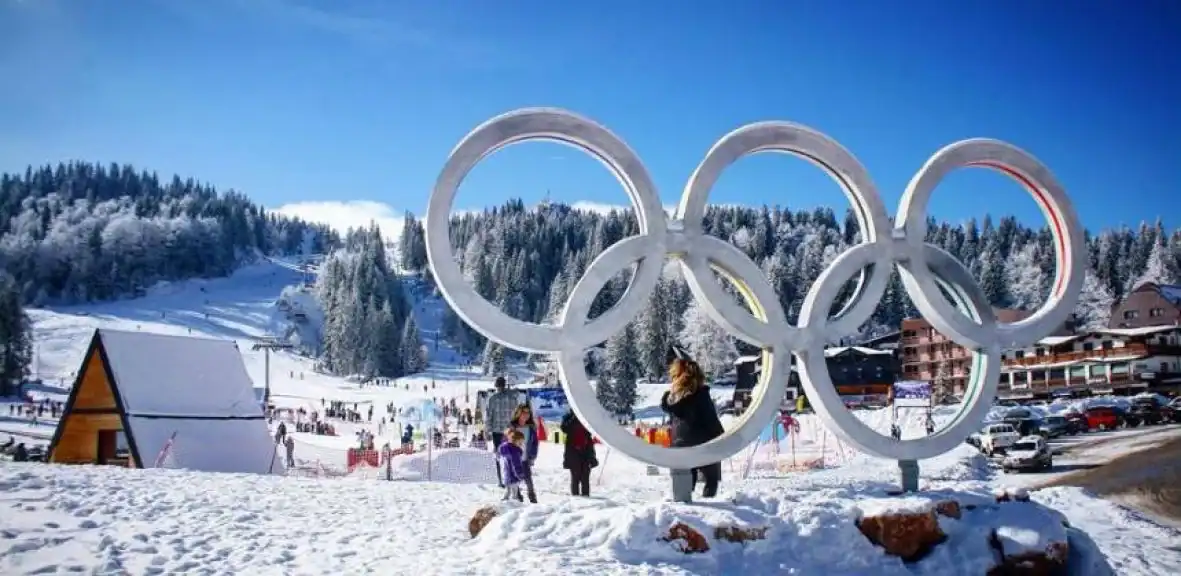 Ski tracks – Sarajevo Winter Olympics.
Ski tracks – Sarajevo Winter Olympics.
Very close to the Cathedral are three museums related to the Bosnian War.
The Museum of Crimes Against Humanity, the Museum of the Siege of Sarajevo, and the Srebrenica Gallery are dedicated to the worst crimes against humanity in Europe since World War II.
The Tunnel of Hope Museum, located next to the airport, is the most visited museum in Sarajevo. Since it is difficult to get there, it is recommended that you go on a tour called “Fall of Yugoslavia” with the Meet Bosnia agency.
Visiting this museum will allow you to hear stories of survival, ingenuity, and resilience. You will learn how the only connection Sarajevo had with the rest of the world was a one-meter-wide tunnel constructed between March 26 and July 30, 1993.
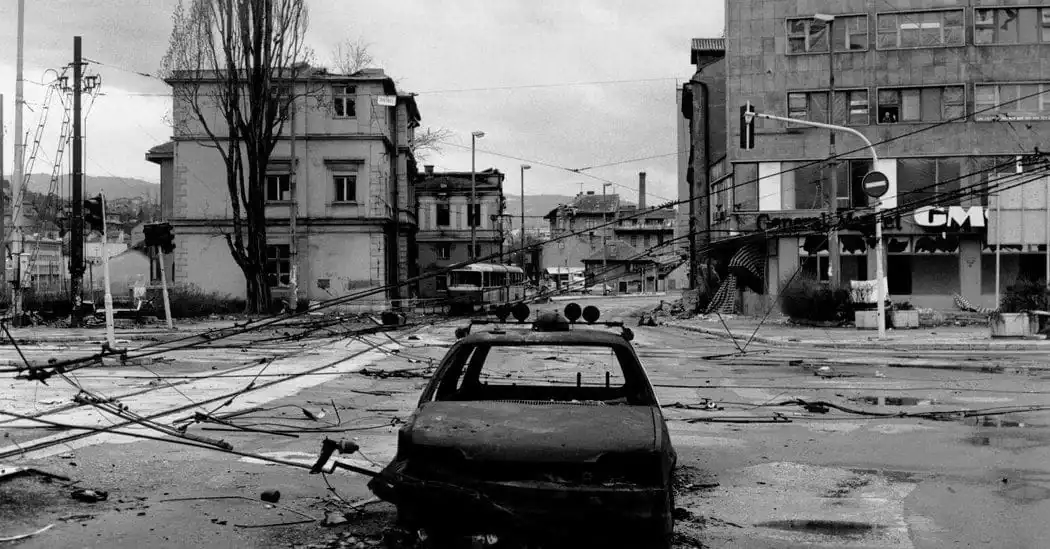 Sarajevo Center during the Siege – Fall of Yugoslavia.
Sarajevo Center during the Siege – Fall of Yugoslavia.
Day 3 – Nature
Set aside one day for culture, one day for history, and one day to experience the nature around Sarajevo. Depending on your level of fitness, there are three options:
a) Light option: walk to Goat’s bridge
If you’re looking for an easy stroll over relatively flat ground, this is the route for you!
Find the Town Hall – it’s impossible to miss, as it’s the largest building in the Old Town – and follow the Miljacka River upstream. It takes about 45 minutes to reach Goat’s Bridge, a single-arch stone bridge from the Ottoman period.
Centuries ago, it was the first thing travelers would see on the way from Sarajevo to Istanbul.
About halfway between Town Hall and Goat’s Bridge, you will pass through Ambassador’s Alley. Since 2002, ambassadors of foreign countries have planted a linden tree alongside the mayor of Sarajevo upon arriving in Bosnia and Herzegovina. You can see 238 stone plates in the alley with the names of the ambassadors and their countries of origin.
b) Medium option: hike to Skakavac waterfall
Bosnia and Herzegovina is a country rich in water. Wherever you go, you’re never far from a river, stream, lake, or waterfall. The country officially has 202 waterfalls, and the tallest one is located very close to Sarajevo. It’s called Skakavac, which means “grasshopper” in the local language, and it is 98 meters tall. Although Skakavac doesn’t produce as much water as Kravice (in the south) or Štrbački Buk (in the northwest), it’s still worth visiting, especially after a few rainy days.
The easiest way to visit Skakavac is to go to the Sutjeska bus station (next to the second gymnasium, a five-minute walk from the Presidency building) and take the number 69 bus to the village of Nahorevo. From the Nahorevo bus station, it’s just over six kilometers to the waterfall.
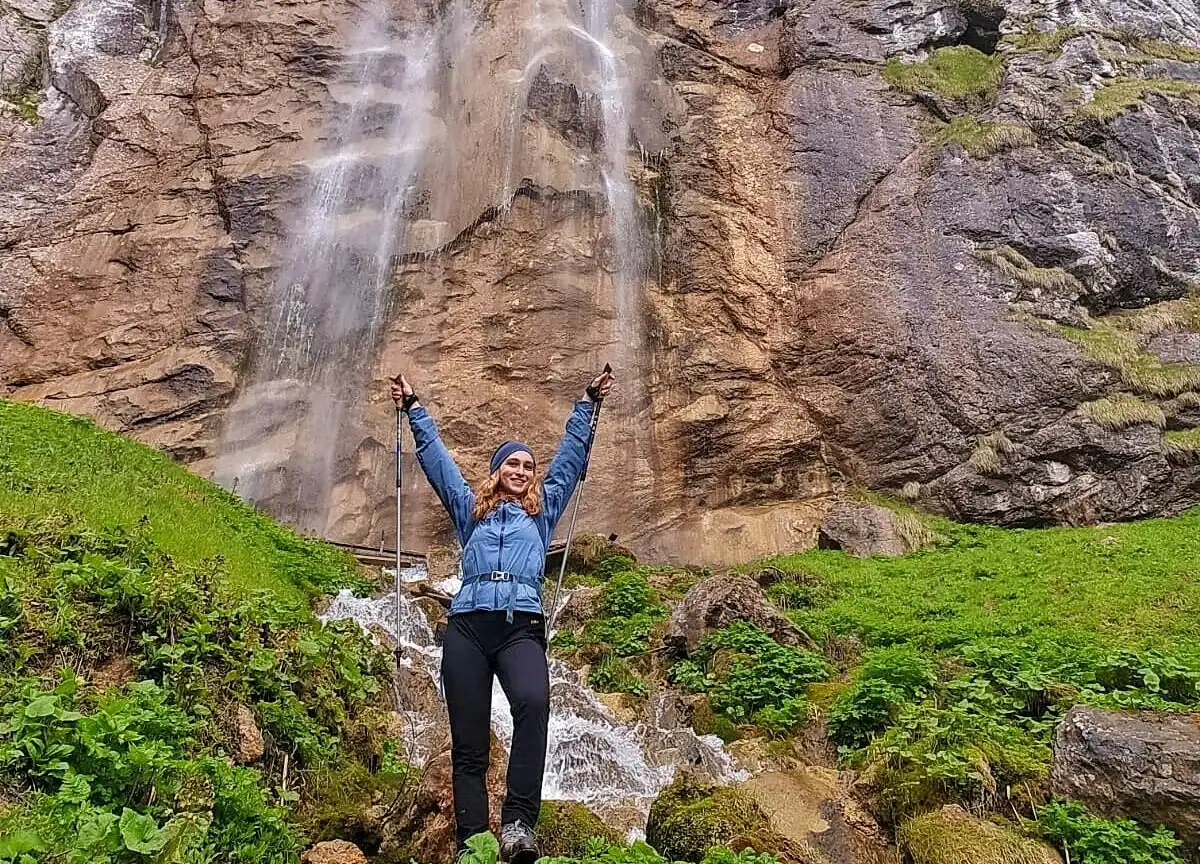 Skakavac waterfall in Bosnia Herzegovina.
Skakavac waterfall in Bosnia Herzegovina.
c) Challenging option: Lukomir
Lukomir is not in Canton Sarajevo, but most visitors still come from Sarajevo rather than Konjic, a town southwest of Sarajevo that is closer on the map.
Lukomir village is located at an altitude of almost 1,500 meters, and it is considered the highest settlement in Bosnia and Herzegovina. The people who live there are shepherds, and some of them still wear traditional 19th-century clothing.
The village is abandoned from November to April due to snow and inaccessibility, but it’s possible to visit from April to October.
To reach the village, drive from Sarajevo to the village of Umoljani, which takes about one hour. Then, walk about 10 kilometers to reach Lukomir. This means it will take you about five hours to walk there and back, so of the three options for experiencing nature around Sarajevo, this one is the most challenging.
Once you reach Lukomir, treat yourself to pita; it’s one of the best places in the country to enjoy this dish.
Meet Bosnia
Welcome to the place where curiosity meets excitement, and every trip feels like a new adventure waiting to happen.
– Experience the best of Bosnia and Herzegovina in 3 days – HERE
– Mostar Tour – Full Day guided tour – HERE
– Fall of Yugoslavia – Sarajevo Siege Tour – HERE
… check all the tours here.
Our team is like a close-knit family, made up of folks from all kinds of backgrounds – sociology, economics, and more – who share a genuine love for helping travelers connect deeply with the places they explore.
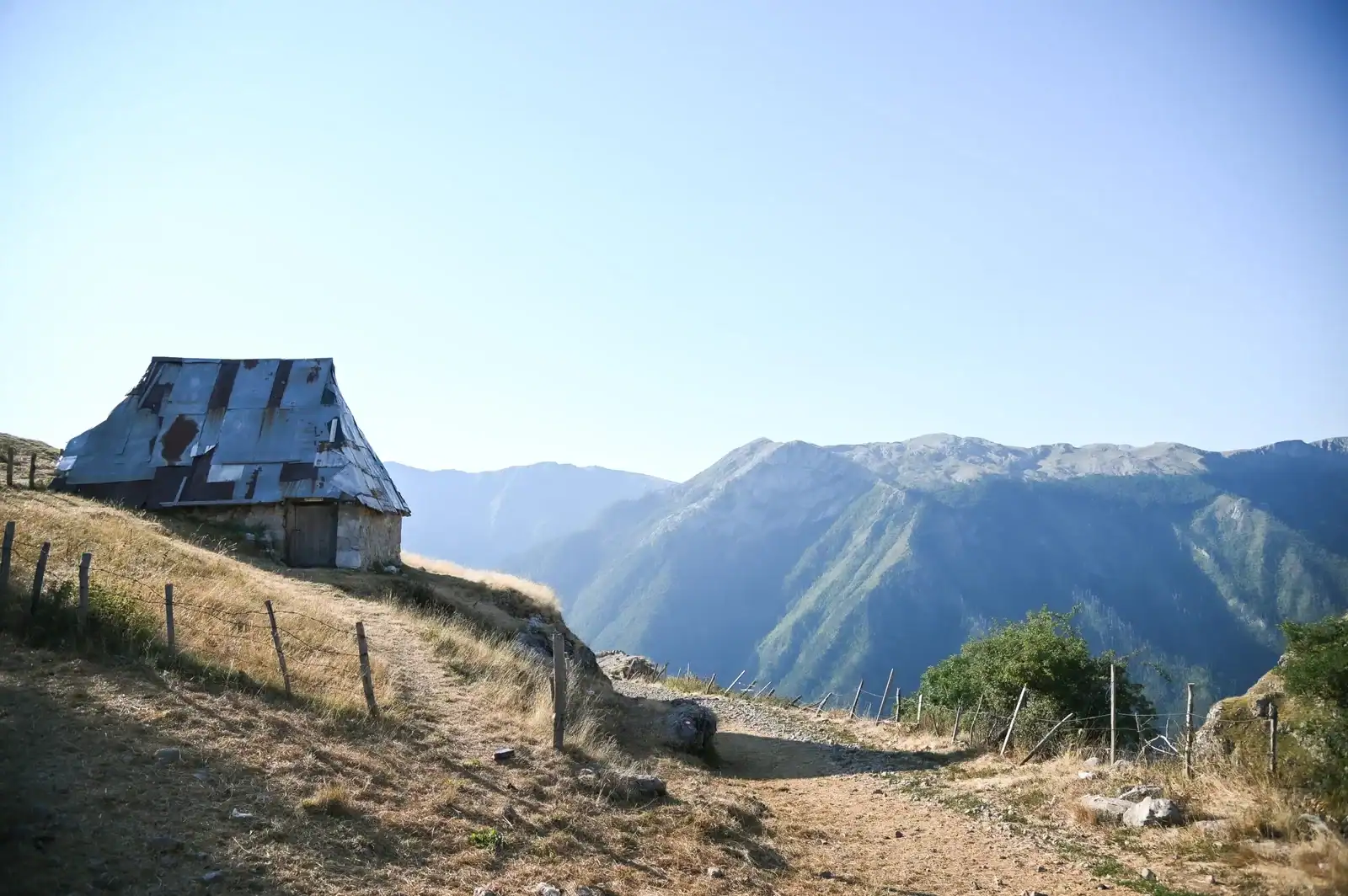 Lukomir village in Bosnia Herzegovina.
Lukomir village in Bosnia Herzegovina.
-

We are devoted to immersing ourselves in the ambient values, historical significance, and cultural depth of the most captivating tourist destinations.
View all posts We are devoted to immersing ourselves in the ambient values, historical significance, and cultural depth of the most captivating tourist destinations.
Please visit:
Our Sponsor
